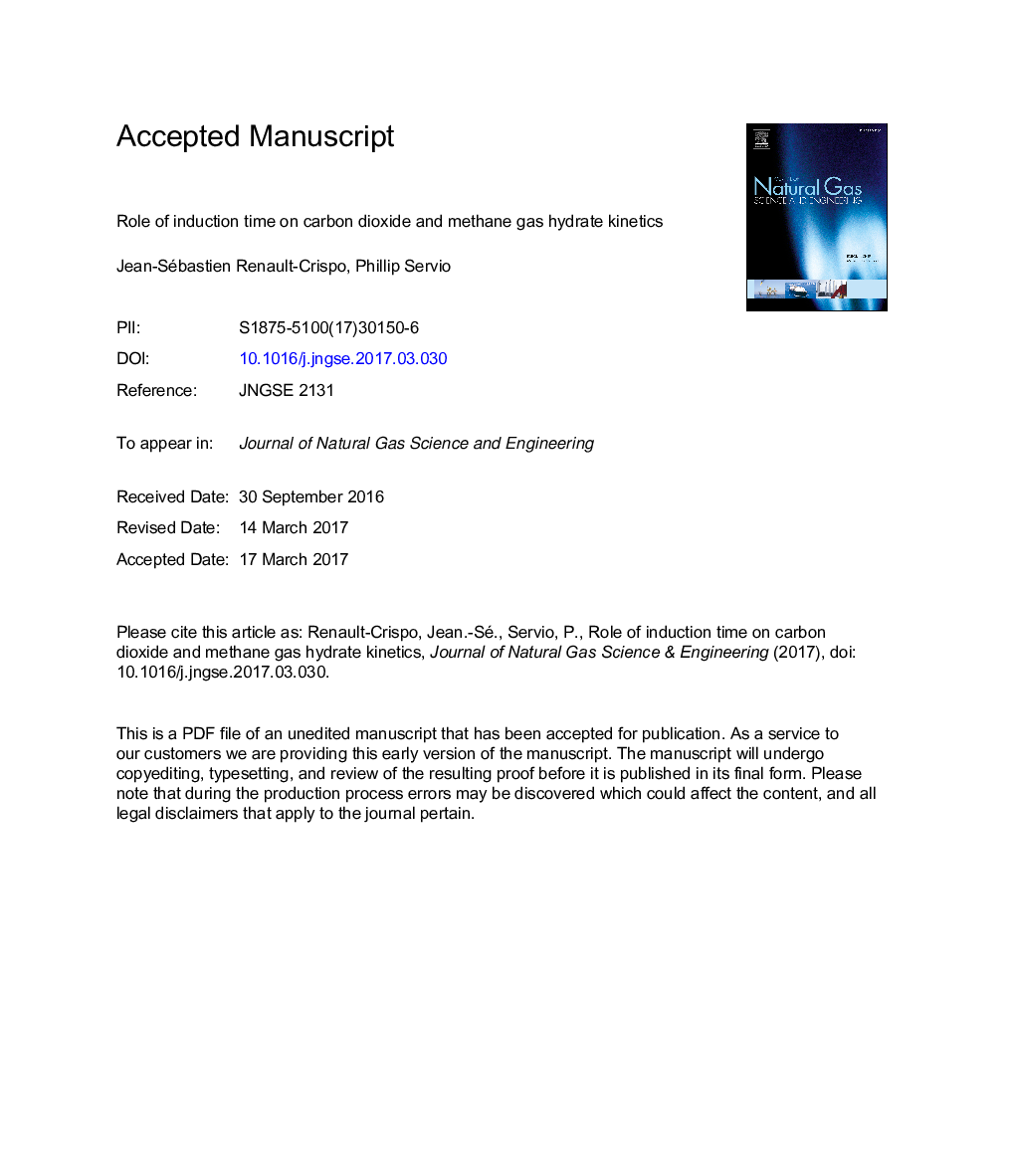| Article ID | Journal | Published Year | Pages | File Type |
|---|---|---|---|---|
| 5485105 | Journal of Natural Gas Science and Engineering | 2017 | 33 Pages |
Abstract
This study showed a significant variability in gas consumption rate values during gas hydrate growth at a same experimental condition for a specific experimental setup. This is important since many studies report a singular gas consumption rate or no associated statistics. Carbon dioxide hydrate gas consumption rates had of coefficient of variation of 2.7% for 204Â kPa, 9.7% for 317Â kPa and 9.6% for 435Â kPa driving forces. The gas consumption rates decreased with increasing induction time following a first-order response. A high induction time resulted in a higher bulk liquid temperature increase meaning a greater amount of initial carbon dioxide hydrates formed. Methane hydrates did not exhibit the same behaviour of gas consumption rate with induction time. Variations in methane gas consumption rates were 4.8% for 698Â kPa and 2.4% for 1564Â kPa driving forces. A regression of metastable dissolution during these kinetic experiments demonstrated that the liquid mole fraction limit increased with increasing driving force. The dissolution time constant decreased with increasing mixing rate. Finally, the maximum experimental liquid mole fraction supersaturation achieved during all experiments was 75 times smaller than the thermodynamically predicted spinodal limit.
Related Topics
Physical Sciences and Engineering
Earth and Planetary Sciences
Earth and Planetary Sciences (General)
Authors
Jean-Sébastien Renault-Crispo, Phillip Servio,
